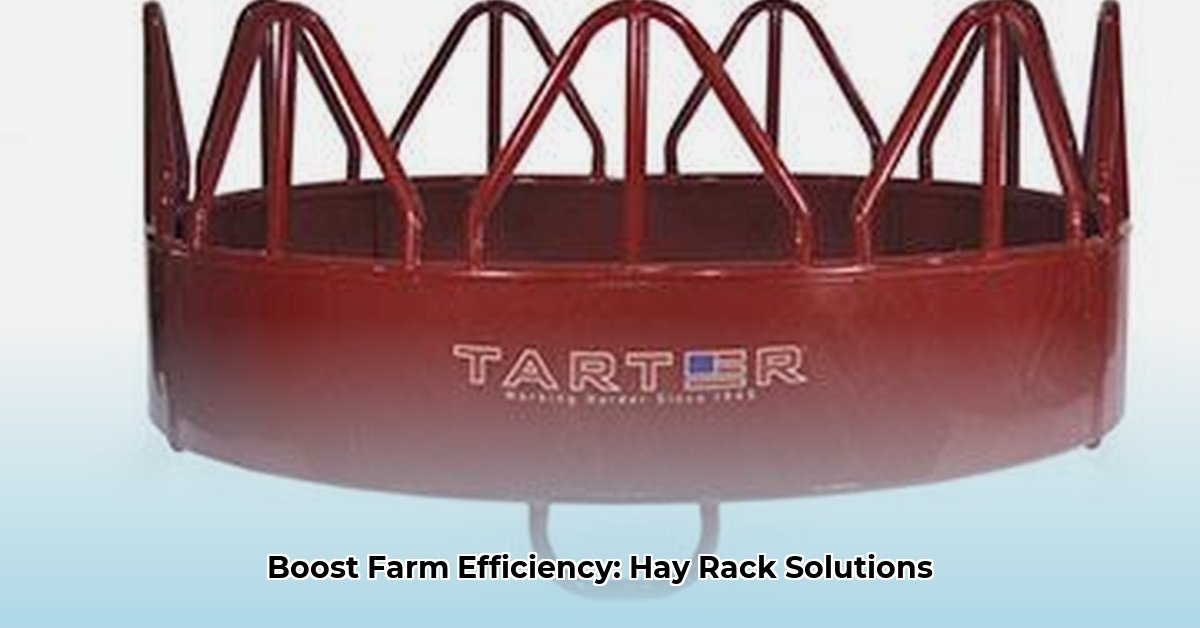
Feeding livestock efficiently is crucial for profitable and sustainable farming. Your choice of hay feeder directly impacts operational efficiency, hay waste, and ultimately, your bottom line. Tractor Supply offers a wide variety of hay racks; understanding their features and benefits will help you select the best option for your farm. For more information on hay feeding equipment, check out this helpful resource: Tractor Supply options.
Choosing the Right Hay Rack for Sustainable Farming
The ideal hay rack considers livestock needs, environmental impact, and budget. Factors like livestock size and feeding habits influence rack design selection. Larger animals might need a larger capacity rack, while gentler animals might fare better with different designs than their more boisterous counterparts. Material selection is equally important. Metal racks offer durability but may rust over time, while wood, especially sustainably sourced wood, presents a more environmentally friendly option, although it might require more maintenance. Consider rack placement; wall-mounted racks save space, while freestanding options provide flexibility. Finally, budgetary constraints will certainly influence the final decision, as some initial cost savings might be offset by shorter lifespans and higher replacement costs..
Minimizing Hay Waste: Maximizing Efficiency and Reducing Costs
Wasted hay equates to lost profits. Inefficient hay feeders lead to significant losses, impacting both your finances and the environment. How can you minimize this waste? Select designs that minimize spillage. Racks with slats or grids, unlike open troughs, prevent animals from trampling and wasting hay. This method also encourages more even distribution of feed, ensuring all animals have equal access. Think of it as a well-organized buffet—plenty of food, minimal mess!
Did you know that using a properly designed hay rack can reduce hay waste by up to 30%? [Source needed - insert verified study here, citing author, institution, and publication]. This translates into significant cost savings over time.
Environmental Impact: Sustainable Choices for a Healthier Planet
Sustainable farming is crucial for the future of agriculture. Reducing hay waste contributes significantly. Spoiled hay leads to methane emissions, a potent greenhouse gas. Minimizing waste is beneficial for both your wallet and the environment. Consider hay racks made from recycled or sustainably harvested materials to further reduce your farm's environmental impact. The debate continues about the most environmentally friendly material for hay racks, with arguments for sustainably sourced wood and recycled metal.
Animal Welfare: Promoting Healthy and Productive Livestock
Happy animals are healthy animals, contributing to better productivity. A well-designed hay rack promotes animal comfort and well-being. All animals should have easy access to food, minimizing competition and stress. Less stress means fewer injuries and illnesses, resulting in lower veterinary bills. Studies show that reduced livestock stress can improve weight gain and milk production, further emphasizing the economic benefits of choosing a well-designed hay feeder.
A Hay Rack Buyer's Guide: Making the Right Choice for Your Farm
Before visiting Tractor Supply, use this checklist:
- Livestock Type and Size: Select a rack appropriately sized for your livestock.
- Space Available: Precisely measure your available space.
- Material Durability: Consider the pros and cons of metal versus wood, factoring in your climate and budget.
- Budget: Determine a realistic budget and adhere to it.
- Ease of Cleaning and Maintenance: Choose a rack that is easy to clean and maintain, ensuring hygiene for your animals.
| Feature | Metal Hay Rack | Wooden Hay Rack |
|---|---|---|
| Durability | High; less susceptible to damage | Moderate; can be damaged by moisture |
| Maintenance | Relatively easy to clean | Requires more regular treatment |
| Initial Cost | Generally higher | Generally lower |
| Long-Term Cost | Potentially lower (longer lifespan) | Potentially higher (shorter lifespan) |
| Environmental Impact | Can be high (manufacturing); may be recyclable | Lower if sustainably sourced; can be biodegradable |
Investing in a high-quality hay feeder is a long-term investment in your farm's success. Choosing wisely boosts efficiency, reduces waste, improves animal welfare, and promotes sustainable, profitable farming. Eco-conscious farming secures a prosperous future for your farm and the planet.